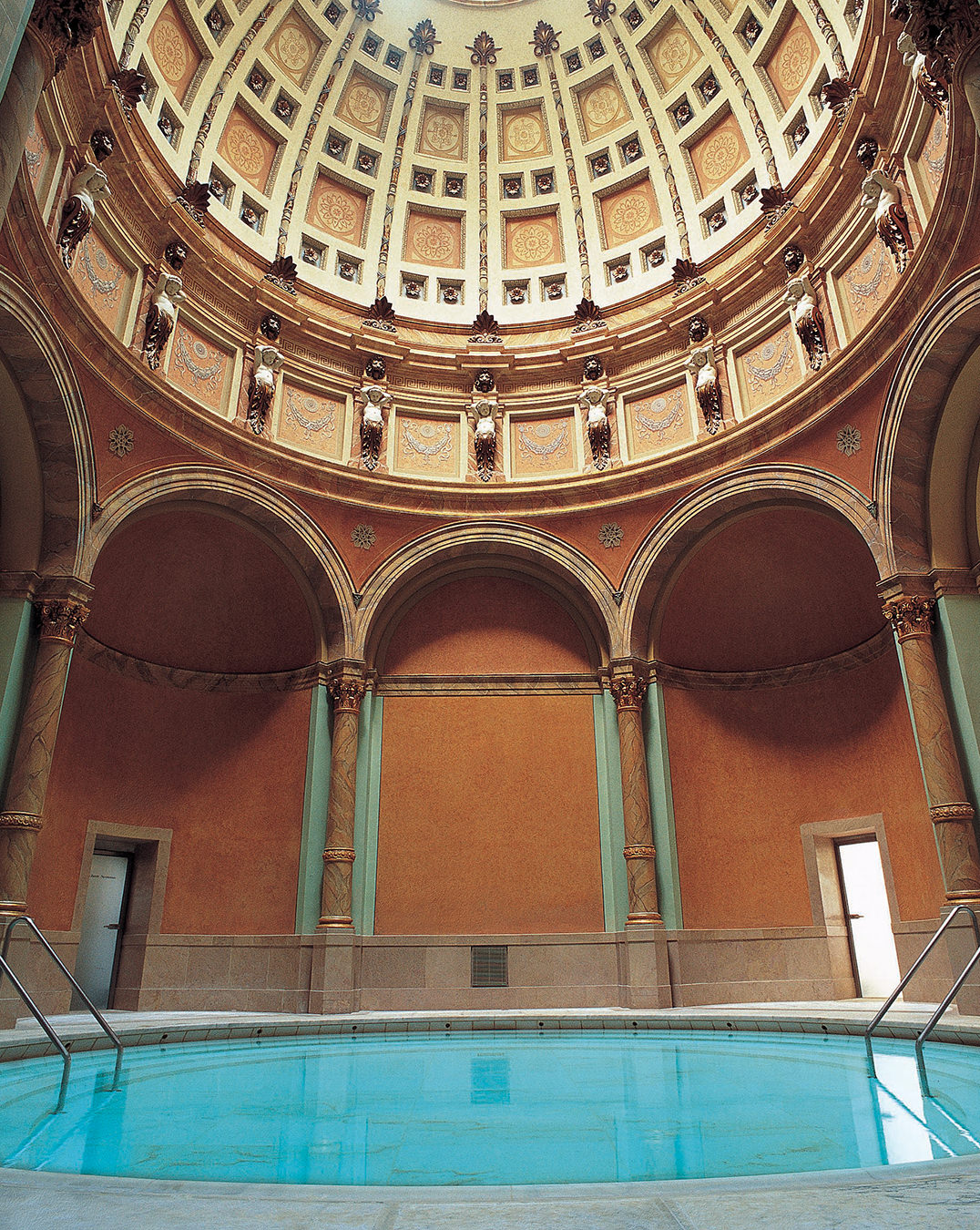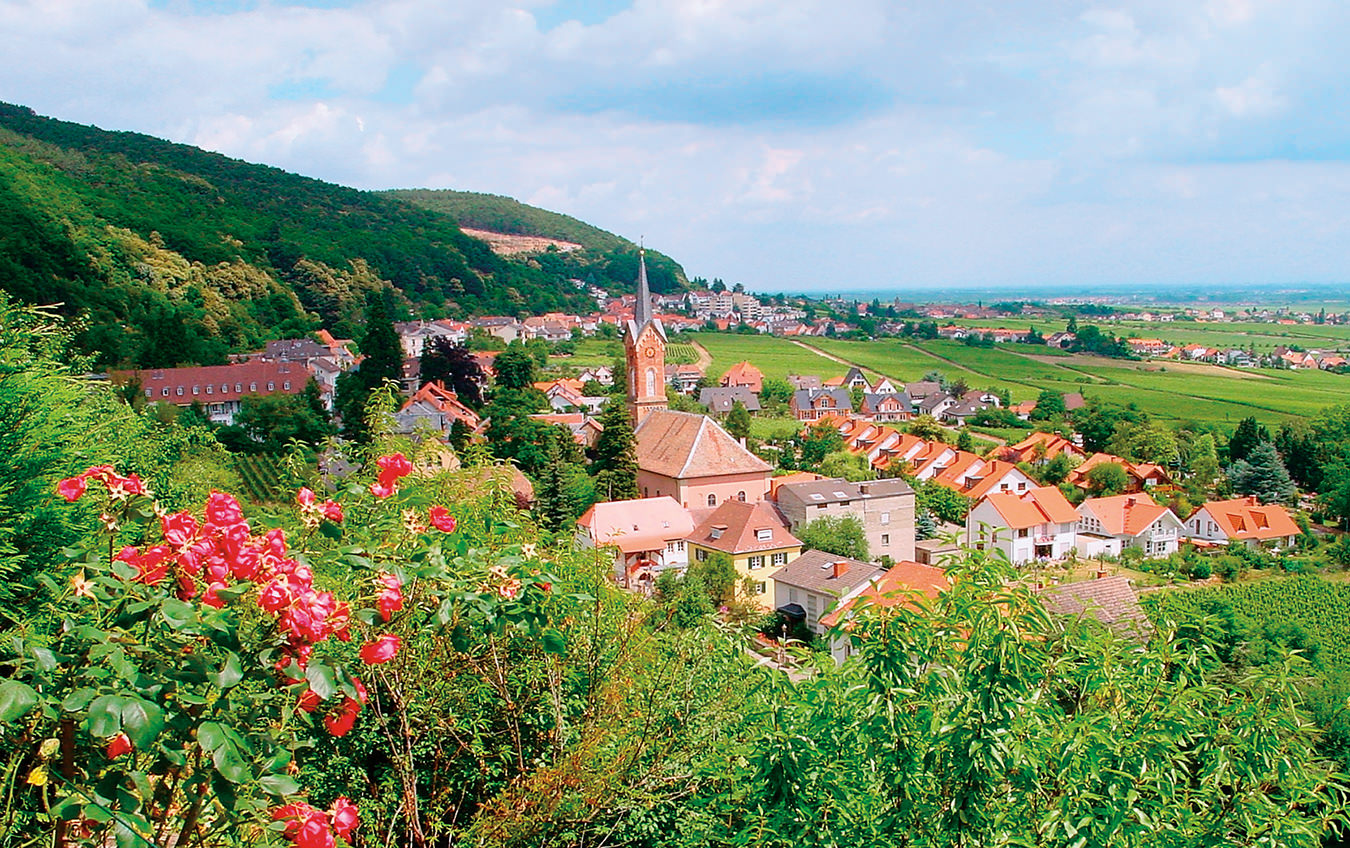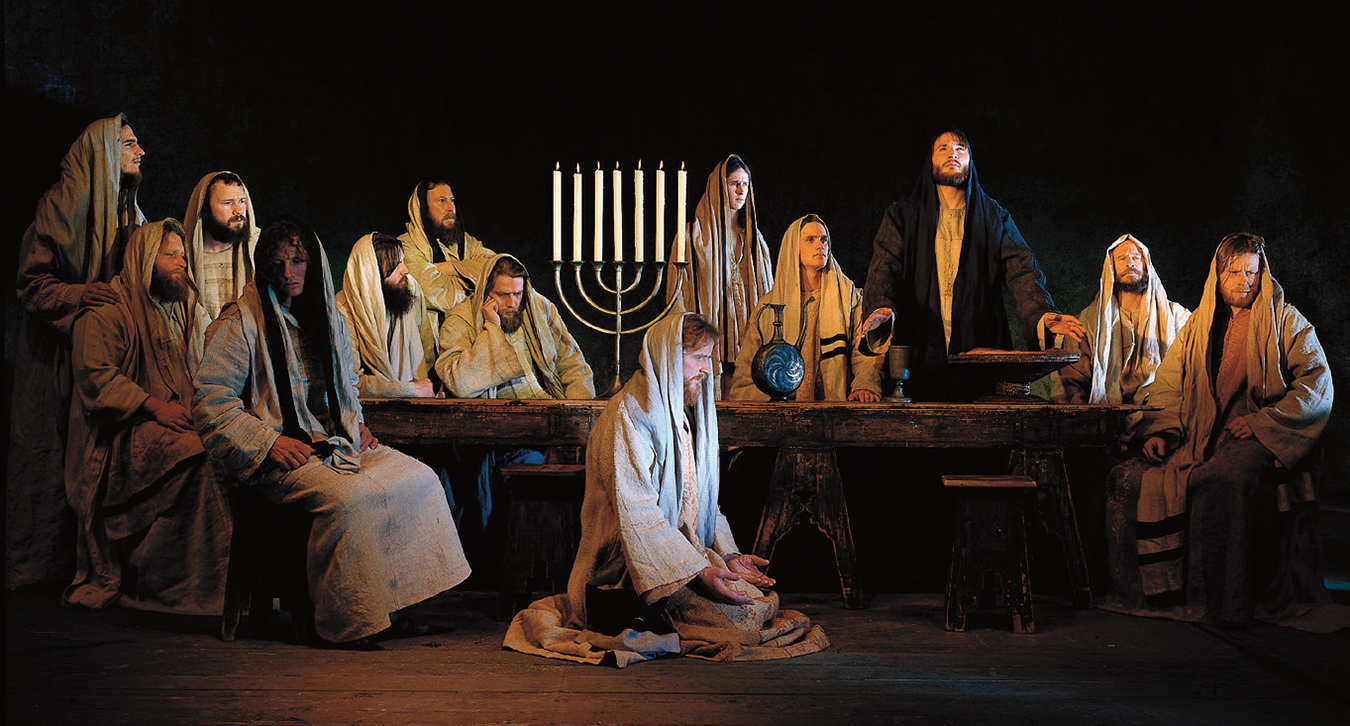-
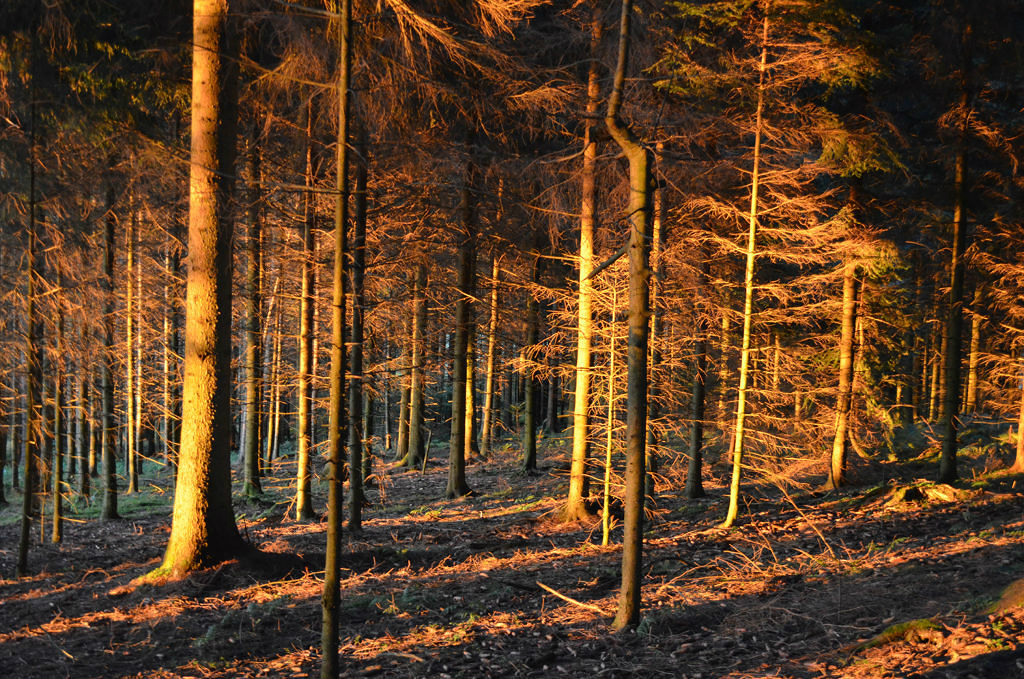
The Brothers Grimm seemed daunted, too, portraying the forest as dark and foreboding.
-

A typical road winding through the Black Forest.
-

Baiersbronn is famous for having the highest concentration of Michelin stars in the world.
-
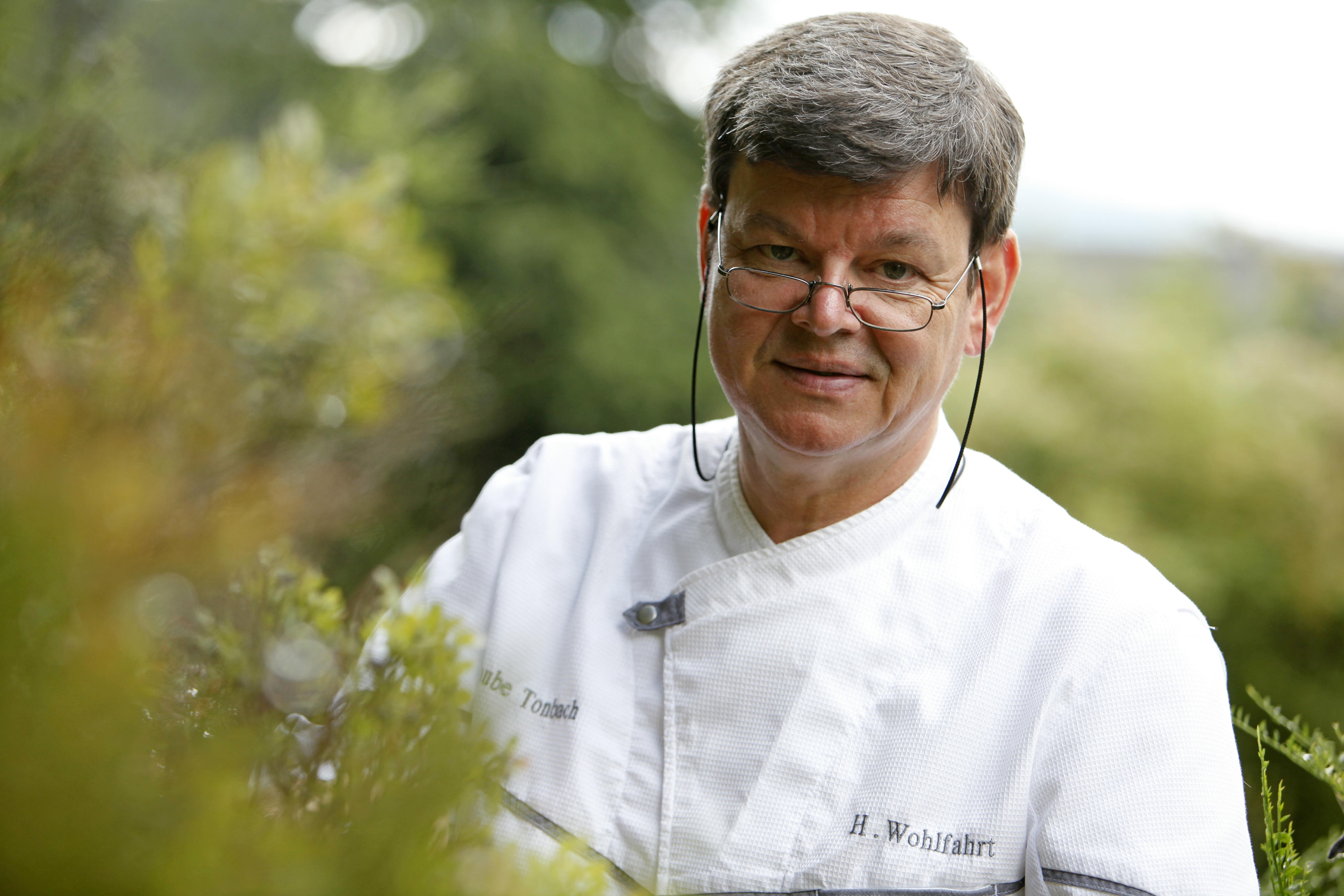
Chef Harald Wohlfahrt is the longest serving three-star chef outside of France.
-

Wohlfahrt’s Schwarzwaldstube is one of the most coveted reservations in the country.
-

A traditional flammkuchen—a flatbread covered in crème fraîche, cheese, onions, and lardons.
An Edible Guide to Germany’s Black Forest
Fine dining and fairy tales.
It was the Romans who first named southwest Germany’s Black Forest—they called it Silva Negra—a place where the trees grew so densely no light could penetrate through. The Brothers Grimm seemed daunted, too, portraying the forest as dark and foreboding—the quintessential spooky woods—a hideout for witches and wolves. Yet while the name stuck throughout the ages, travelling through this scenic, welcoming region is anything but bleak. In fact, this land of castles, clocks, and kirsch is one of Europe’s oldest tourism destinations, and the birthplace of modern hiking.
It was a man named Philip Bussemer who, at the end of the 19th century, drew up hiking maps for the northern edge of the Black Forest; the world’s first trail maps. Within a few years, Bussemer had opened a tourist information centre, published a series of hiking guides, and placed signposts along popular trails. Soon, hiking would became a national obsession, as German as schwarzwderkirschtorte (that’s Black Forest cake).
And cake—as well as cheese and sausage—factors into any Black Forest hike. Small, cabin-like cafés, or hütte, are located along popular trails. The idea of coming across a little house in the woods has a fairy tale appeal—and on a recent trip, I was not immune to the charm of following a trailhead sign reading Blockhütte to a sweet café with a terrace overlooking the idyllic Tonbach Valley. All around me, hikers devoured hearty meals, and while I could have used a snack myself, I resisted. Very soon, I would sit down to a meal I’d anticipated for six long months.
Forget France, I had come to Europe’s real culinary mecca. This part of the Black Forest, called Baiersbronn, is famous for its high concentration of Michelin stars. Baiersbronn’s reputation is largely the result of two pioneers—chef Harald Wohlfahrt and hotelier Heiner Finkbeiner—who, in the late seventies, opened a fine dining restaurant in Finkbeiner’s family hotel, the Traube Tonbach. Today, Wohlfahrt is the longest serving three-star chef outside of France, having held his rank for the past 26 years. His restaurant, the Schwarzwaldstube, is one of the most coveted reservations in the country.
The Black Forest certainly exudes a fairy tale charm—one travellers will hope never ends.
Of Germany’s 250 Michelin-starred chefs, at least 80 got their start cooking for Wohlfahrt, making Traube Tonbach a de facto culinary institute. One chef who trained under Wohlfahrt is Patrick Schreib, who now works to promote the entire Baiersbronn region. Schreib joined me for dinner—a seven-course meal that includes marinated wild salmon with smoked paprika, an essence of venison with mushroom ravioli, duck liver pudding, a gratin of pike dumpling and scallop, a rack of lamb with vegetable couscous, strawberry sorbet, and a basilic-yogurt granite with mascarpone and lavender-honey sauce.
While Baiersbronn’s reputation as a gourmet destination has grown, Schreib explains the historically remote region’s culinary tradition of living off the land has been central to its success. The Baiersbronn “brand” can be summarized in three words: “culinary hiking heaven,” with restaurants featuring locally-foraged ingredients, hikes led by wild plant guides, and a roster of regional food specialties (or “Baiersbronn Treasures”) that include pine needle-infused ice cream, lamb sausages with wild thyme, goat cheese with wild marjoram, and forest honey, among others. “Truly, sustainability is in the culture of the people, it’s not just a fad around here,” says Schrieb.
Culinary hikes can feature anything from pit-stops for five-course meals to detours for beer and liquor tastings along the way, and are easily booked through Baiersbronn’s tourist office. I joined wild plant guide Christine Bissell on a hike that began at the Klosterreichenbach monastery, a sort of health and wellness destination of the Middle Ages, with records dating back to 1082 AD. In a replica of the monks’ original healing garden, Bissell introduced me to some potent herbs, explaining their uses in medicinal salves and teas. Then we set off, through meadows and up into the hills to find ordinary plants with extraordinary healing properties—and a lot of flavour, as well. Yarrow, for instance, was called soldiers’ herb because of tannins and salicylic acid that make it anti-bacterial, astringent, and a cure-all for stomach ailments. But yarrow also went into a small feast Bissell had prepared using plants foraged in the Black Forest.
On a large flat-topped rock, Bissell laid out her spread. She had made a pesto and tomato salad with an astonishing number of wild plants—yarrow, lady’s mantle, ribwort plantain, ground-ivy, hedge bedstraw, oregano, and salad burnet. The myriad flavours blended beautifully and were delicious on crackers. There was Buhlbach smoked trout with spignel (a herb) and a dessert that was especially rare and delicate—ground-ivy leaves that Bissell had dipped in chocolate. We washed it all down with fresh spring water and unfiltered apple juice flavoured with meadowsweet. It all felt a bit Midsummer Night’s Dream, this magical meal beside a brook.
The historically remote region’s culinary tradition of living off the land has been central to its success.
Leaving Baiersbronn wasn’t easy, but soon I was having the time of my life, wheeling around hairpin turns and looping around ski resorts on the road to Oberkirch. With roads like these (and Mercedes Benz and Porsche based in nearby Stuttgart), it’s no wonder that there is an annual Baiersbronn classic car rally each September. Though I was driving a rather ordinary Opel, I still felt like a hero after that epic mountain journey, and wanted a drink to celebrate. Oberkirch, with its 900-plus distillers, is perhaps Germany’s best spot for a beverage, and I soon found my way to Brennerei Grüner Baum, a family distillery that’s operated continuously since 1645. After working abroad as a chef for 30 years, Johannes Müller returned home to take over the still from his father, becoming the 10th generation distiller in the family. Though he makes traditional kirsch and fruit-based schnapps, Müller was most proud of his whiskey (made from an ancient grain called emmer), and his line of three-flavour schnapps (think elderberry-chocolate-chili, and a pear-quince-cinnamon that can only be described as “Christmas-in-a-bottle”).
The next morning I departed for Durbach, home to some of Germany’s best vineyards. More people in the state of Baden-Württemberg drink wine than beer, and you can’t come here without trying the riesling. Not far from the French border, Schloss Staufenberg is a glorious example of a hilltop castle, owned by the Margrave of Baden, and surrounded by lush vineyards. Daniel Hormann markets the Staufenberg wines worldwide, and greets me with a glass of sparkling riesling on the castle’s rooftop patio. It’s a wine so good the price, at 14 euros, seems laughably low, and part of the reason that the Black Forest is in vogue these days. “It used to be Germans who would go to France to eat and drink,” says Hormann, “but now it’s completely reversed. The French cross over at the weekend to eat and drink, then load up their cars with wine and go home.” As we enjoyed a traditional flammkuchen—a flatbread covered in crème fraîche, cheese, onions, and lardons—on the castle’s rooftop patio, we could see the spires of Strasbourg just a 40-minute drive away.
With only a day left to explore, I headed south to the Hochschwarzwald region where the highest peak, the Feldberg, towers over a picturesque lake district. A gondola takes skiers and hikers to the Feldberg’s broad summit, where from an observation tower one can see Mont Blanc in France, and Jungfrau in Switzerland. The same tower houses the Black Forest Ham Museum (yes, actually) where one can learn about the process of making the genuine article. Real Black Forest ham is nothing like what passes for it in North America. Closer to prosciutto, but smoked and cured with typical Schwartzwald seasonings like pine, juniper, pepper, coriander, and bay leaves, authentic Black Forest ham is not just a cold cut, but lends itself to all manners of preparation, including ham-flavoured ice cream with figs.
From wild herbs to schnapps, castles to culinary hikes, the Black Forest certainly exudes a fairy tale charm—one travellers will hope never ends.


